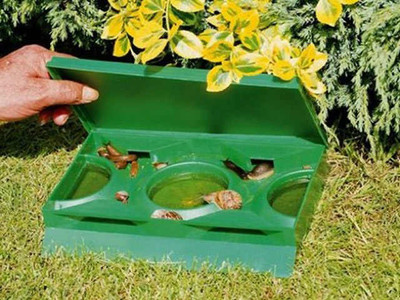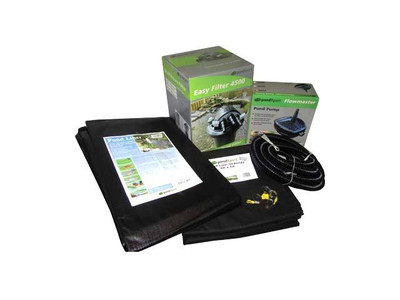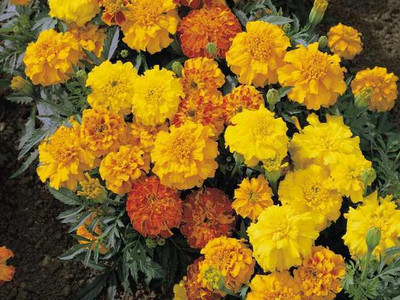How Do I Protect my Seedlings from Slugs and Snails?

2024 has been another year with lots of reports of seemingly insurmountable slug problems in UK gardens. You can theorise as to why slug populations seem so robust of late. Milder winters and a decline in the number of natural slug predators are two possible reasons.
Demoralisingly high levels of rainfall in 2024 are almost certainly a factor as well, as they are always more active the wetter the conditions are.

In warmer winters, slugs can stay pretty active in terms of feeding or breeding, and are ready and raring to go by the time spring comes around. Slugs can consume twice their own body weight each day, which gives you an idea of just how much havoc they can collectively wreak. They also reproduce at an exponential rate, while one slug can lay hundreds of eggs in a year, usually in the spring or autumn.
Crops tend to be most vulnerable to slug damage when they are in the young seedling stage, but more mature plants can very much be damaged too, especially those with leafy growth (such as lettuce). Slugs are particularly partial to carrots, lettuce, parsnip and celery, as well as perennials like hostas.

How to Deter Garden Slugs
Many slug deterrent methods have been floated, and sometimes you need to untangle the more effective strategies from the ‘old-wive’s tales’. What you’re unlikely to come across is a 100% foolproof slug control, unless you’re willing to drop a nuclear bomb in your garden.
What methods are available to the gardener to tackle slug onslaughts and how well do they work?
Picking them off by hand
In the short term, a bit of nocturnal hunting can make a good dent in slug numbers. Bring a bucket and a torch with you and see how many of them you can pick off in the garden.
You can then either proceed to murder them or carry them far enough away from your vegetable beds that they won’t automatically return via their homing instinct (20 metres is said to be the minimum recommended distance). You should wear gloves and wash your hands, as slugs can carry nasty things such as ‘rat lungworm’.
This may seem like a bit of a futile or annoying task when you have a lot of slugs around, but if done for a consistent few nights it can really stop an infestation in its tracks.
Beer traps
Beer (or yeast) traps are a tried-and-tested method. Certainly if visual results are what you’re after then opening up your beer trap to find it full of slugs can be validating, if also morbid and gruesome.
The only question that’s sometimes raised when it comes to beer traps is whether they can inadvertently attract more slugs to your garden. A lot of you might be past the point of worrying about that!

Pellets
Another short term method is to use ferric phosphate slug pellets. We tend to caution that these should be used sparingly, or to stave off a particularly bad or untimely attack. Although ferric phosphate pellets are much safer to use than the metaldehyde pellets of old (which have now been phased out due to their toxic effect on wildlife), you don’t really want to be covering your garden with them every spring.
Barriers
Horticultural fleece can keep slugs away from plants if the edges are weighed down. For individual plants, slug collars with angled lips can deter slugs unless they are very persistent. A copper tape barrier can have some effect; the wider it is the better.
Protective perimeters made with coffee grounds, eggshell, woodchip or horticultural grit are some of the DIY remedies that you will sometimes see suggested. The idea is that the material is too unpleasant or too sharp for the slug to crawl over (even causing it to bleed out), but this has largely been debunked and it’s been shown that sharp eggshells, for example, will not deter a slug who’s gotten the sniff of a meal.
Sprays
Garlic-based mixtures or plant defense sprays will likely not do much in the event of a major infestation, but when used regularly they can have a protective effect by masking scents and confusing the slugs. Rain can wash the spray off foliage, so make sure to reapply after a downpour.
Starting Seeds Indoors
Another method is to grow seedlings under cover and allow them to get well established before planting out. They will be stronger and more able to brush off some slug damage.
Watering Early
Watering earlier in the day is good practice, as doing so in the evening can lead to moist conditions overnight when slugs are active.

Sacrificing Some Crops
Bearing in mind that you are unlikely to fully ‘eliminate’ slugs, one way of being prepared is to simply sow extra seeds, in the hope that you won’t lose all of your crop in one go. You could also grow a sacrificial crop such as marigolds to divert slugs away from susceptible plants.
Timing
It can also be a good idea to delay planting until early June, when (hopefully) hotter and drier weather can see a fall-off in slug activity. This of course also depends on plant sowing instructions, but you can get ahead of things by ordering seedling plants or propagating seedlings indoors. Celery transplants for example can be planted out in early June.
Nematodes
These are microscopic worms that you can ‘water’ into your garden as a biological pest control, best applied during spells of wet weather. ‘Nemaslug’ for example is targeted to seek out slugs in the garden. Once one of the worms has found a host, it will poison the slug and stop it feeding within days, while leading to a drawn-out death.
This can be an effective solution but it will need re-applications and it can be pricey. They can also be hard to get your hands on at demand-heavy times of the year.

Long-Term Slug Control
Some more long-term measures of slug control are based on the principle of encouraging natural predators.
A Pond
A wildlife-friendly pond is almost guaranteed to introduce a number of slug predators to your garden area, including frogs, newts and (to a lesser extent) hedgehogs. Setting up a pond doesn’t need to be a big undertaking; even a medium-sized container filled with water can attract beneficial creatures.
Habitat
Avoid leaving damp, shaded areas for slugs to shelter under in your garden. Examples of these are piles of wood, rocks, rotting timber, tall grass or garden debris.
There’s a balance to be struck here, as an overly manicured garden can lead to less wildlife diversity (and consequently less natural slug predators), but certainly it can be a good idea to clear up any potential hiding areas in advance of spring. Raise pots off the soil where possible.

Birds
A lack of hiding areas also means that they can be spotted and picked off more easily by the aforementioned predators. Hedges, shrubs and trees can encourage natural slug predators such as blackbirds and thrushes. So can bird feeding stations. Turning over the soil in early spring or autumn can expose slug eggs (laid in clusters), which birds will feed on in turn.
Ducks
Speaking of predators, ducks are renowned slug-hunters that can almost be trained to patrol your garden. There can be an associated risk with poultry that they will also do a number on your vegetable patch, but ducks are much less inclined to do this than chickens or hens, and in any event you can set up some kind of perimeter around your crops and allow the ducks to protect it.

As regards the type of duck, go for ‘Indian Runner’ or ‘Khaki Campbell’; both are the boogeymen that slugs tell their children about. Before you rush out and adopt one though, just know that they are also on the food chain and will need protection from foxes etc.
Can Slug Eggs Survive over Winter?
One of the reasons I like hard frost is that I always thought it helped control the coming season's slug numbers by freezing eggs, but I read recently that this is not the case. It seems slug eggs are able to survive and remain viable below -10˚C by using a process called 'supercooling' where they are able to cool below freezing without becoming a solid. Bang goes that benefit!










